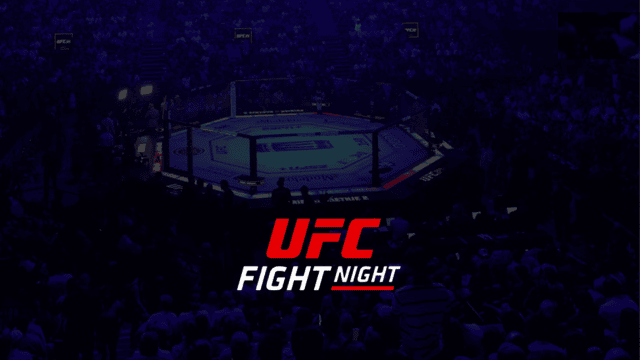How to Become an MMA Fighter?

As someone who has spent years in the MMA world, I can tell you that becoming a professional fighter is a challenging yet rewarding journey. Mixed Martial Arts (MMA) demands not only physical prowess but also mental resilience and strategic planning. Here, I’ll share a comprehensive guide to help you navigate this path, from the basics to becoming a professional fighter.
Understanding MMA
What is MMA?
Mixed Martial Arts (MMA) is a full-contact combat sport that incorporates techniques from various martial arts disciplines, including Brazilian jiu-jitsu, Muay Thai, wrestling, and boxing. It’s a sport that has evolved significantly over the years, gaining immense popularity worldwide.
Different Styles and Disciplines
MMA is a blend of different fighting styles:
- Brazilian Jiu-Jitsu (BJJ): Focuses on ground fighting and submission holds.
- Muay Thai: Known as the art of eight limbs, it incorporates punches, kicks, elbows, and knee strikes.
- Wrestling: Emphasizes takedowns and control.
- Boxing: Focuses on hand strikes and footwork.
Key Organizations and Competitions
The most prominent MMA organizations are:
- UFC (Ultimate Fighting Championship)
- Bellator MMA
- ONE Championship
These organizations host the top competitions where fighters from around the globe compete at the highest level.
Assessing Your Fitness and Skills
Physical Fitness Requirements
MMA requires a high level of fitness. You need strength, agility, endurance, and flexibility. Regular training and conditioning are essential to meet these physical demands.
Basic Skills and Techniques to Master
To excel in MMA, you need to master:
- Striking Techniques: From disciplines like boxing and Muay Thai.
- Grappling Techniques: From wrestling and BJJ.
- Defensive Skills: Including blocking, parrying, and evasion.
Self-Assessment
Evaluate your strengths and weaknesses. Are you better at striking or grappling? Identifying your strong and weak points will help tailor your training accordingly.
Finding the Right Gym and Coach
Researching Reputable MMA Gyms
Look for gyms with a solid reputation. They should have experienced coaches, good facilities, and a supportive environment. Some top gyms around the world include:
- American Top Team (ATT)
- Jackson Wink MMA Academy
- Tristar Gym
What to Look for in a Gym
Ensure the gym has:
- Quality equipment
- Various class offerings (striking, grappling, conditioning)
- A positive and encouraging atmosphere
Choosing a Coach
A good coach can make a significant difference in your career. Look for someone with:
- Experience in coaching professional fighters
- A good track record
- The ability to communicate effectively and motivate you
Developing a Training Regimen
Components of a Balanced Training Program
Your training regimen should include:
- Strength and Conditioning: To build muscle and endurance.
- Skill Training: For striking, grappling, and submissions.
- Sparring and Live Drills: To simulate fight conditions and improve reaction times.
Sample Weekly Training Schedule
- Monday: Strength training and striking techniques
- Tuesday: Cardio workouts and grappling techniques
- Wednesday: Sparring and live drills
- Thursday: Strength training and striking combinations
- Friday: Cardio workouts and grappling drills
- Saturday: Full training session combining all elements
- Sunday: Rest and recovery
Importance of Rest and Recovery
Rest is crucial. It allows your muscles to recover and prevents injuries. Ensure you have at least one rest day per week and get plenty of sleep.
Building a Strong Foundation
Basics of Striking
Focus on techniques from boxing, kickboxing, and Muay Thai. Practice:
- Punches (jab, cross, hook)
- Kicks (roundhouse, front kick)
- Elbow and knee strikes
Basics of Grappling
Learn wrestling and BJJ techniques:
- Takedowns and throws
- Control positions (mount, side control)
- Submissions (armbars, chokes)
Combining Disciplines
Develop an integrated fighting style by combining striking and grappling. Drills that transition from standing to ground fighting are particularly useful.
Nutrition and Diet
Role of Nutrition
Nutrition fuels your training and recovery. A balanced diet is essential for optimal performance.
Basic Principles of a Balanced Diet
Your diet should include:
- Lean Proteins: Chicken, fish, tofu
- Complex Carbohydrates: Brown rice, quinoa, sweet potatoes
- Healthy Fats: Avocados, nuts, seeds
- Plenty of Vegetables and Fruits
Importance of Hydration
Stay hydrated to maintain performance and prevent injuries. Drink water throughout the day and during training.
Sample Meal Plans and Recipes
- Breakfast: Oatmeal with berries and nuts
- Lunch: Grilled chicken with quinoa and steamed vegetables
- Dinner: Baked salmon with brown rice and a side salad
- Snacks: Greek yogurt, protein shakes, fruit
Supplements and Their Appropriate Use
Consider supplements like protein powder, BCAAs, and multivitamins to support your diet.
Mental Preparation
Importance of Mental Toughness
Mental resilience is as important as physical strength. It helps you stay focused and composed under pressure.
Techniques for Building Mental Resilience
- Visualization: Imagine yourself succeeding in various scenarios.
- Meditation: Helps reduce stress and improve focus.
- Goal Setting: Set short-term and long-term goals to stay motivated.
Coping with Stress and Anxiety
Learn techniques to manage stress, such as deep breathing exercises and positive self-talk.
Developing a Strong Work Ethic and Discipline
Consistency is key. Develop a routine and stick to it, even when it gets tough.
Competing in Amateur Fights
Importance of Gaining Experience
Amateur competitions provide valuable experience and help build your confidence.
How to Find and Enter Local MMA Competitions
Research local MMA events and sign up for those that match your skill level. Your coach can also help find suitable competitions.
Preparing for Your First Fight
Understand the rules and what to expect. Train specifically for the fight, focusing on your opponent’s strengths and weaknesses.
Learning from Each Fight
Analyze your performance after each fight. Identify what worked well and what needs improvement.
Transitioning to Professional MMA
Understanding the Path from Amateur to Professional Fighter
Build a strong amateur record before turning professional. The transition involves more rigorous training and higher competition levels.
Building a Professional Record and Reputation
Your record is crucial. Aim to fight and win consistently to build a reputation in the MMA community.
Finding a Manager or Agent
A good manager can help negotiate contracts and find fight opportunities. Look for someone with experience and good industry connections.
Understanding Contracts and Negotiations
Learn the basics of contract negotiations. Ensure you understand the terms and seek professional advice if needed.
Marketing Yourself as a Fighter
Use social media to build your brand. Share your training journey, fight highlights, and engage with fans.
Weight Cutting
Definition and Purpose of Weight Cutting
Weight cutting involves reducing body weight to qualify for a lower weight class. It can give you a competitive advantage in terms of size and strength.
Pre-Camp Preparation
Assess your body composition and set realistic weight cutting goals. Plan your diet and training accordingly.
Nutrition and Meal Planning for Weight Cutting
Follow a diet plan that helps reduce body fat while maintaining muscle mass. Monitor your caloric intake closely.
Hydration and Water Manipulation Techniques
Water loading and depletion can help shed water weight quickly. Do this under the guidance of a professional to avoid health risks.
Training Camp Strategies for Weight Cutting
Incorporate cardio workouts, adjust strength training, and use techniques like sauna sessions to lose weight effectively.
Fight Week Preparation and Weigh-In Day Strategies
Make final adjustments to your diet and hydration. Taper off training to stay sharp without overexerting yourself.
Post-Weigh-In Recovery
Rehydrate and refuel after the weigh-in. Consume electrolyte-rich fluids and nutrient-dense foods to regain energy.
Long-Term Career Considerations
Financial Planning and Managing Earnings
Manage your earnings wisely. Consider saving, investing, and planning for life after fighting.
Dealing with Injuries and Maintaining Health
Injuries are part of the sport. Focus on prevention, proper treatment, and recovery strategies.
Planning for Life After Fighting
Consider careers in coaching, commentary, or starting your own gym. Keep learning and stay involved in the MMA community.
Continuing Education and Staying Updated
Stay updated with the latest training techniques and industry developments. Continuing education can help you stay relevant and competitive.
Conclusion
Becoming an MMA fighter requires dedication, hard work, and strategic planning. By following this comprehensive guide, you can navigate the journey from an aspiring fighter to a professional. Remember to seek professional guidance, stay disciplined, and continuously strive for improvement.






